"Three formulas and three medicines" have been proven to be effective in curbing the virus ...
Traditional Chinese medicine has been playing a critical role in the prevention, treatment and rehabilitation of the COVID-19.
Official figures showed that, up to Sunday, 91.6 percent of the patients in Hubei province, the epicenter of the outbreak, and 92.4 percent of the patients nationwide have been treated with TCM.
"Three formulas and three medicines" have been proven to be effective in curbing the virus, according to the State Administration of Traditional Chinese Medicine. Let's have a look at them.
1. Jinhua Qinggan Granule (金花清感颗粒)
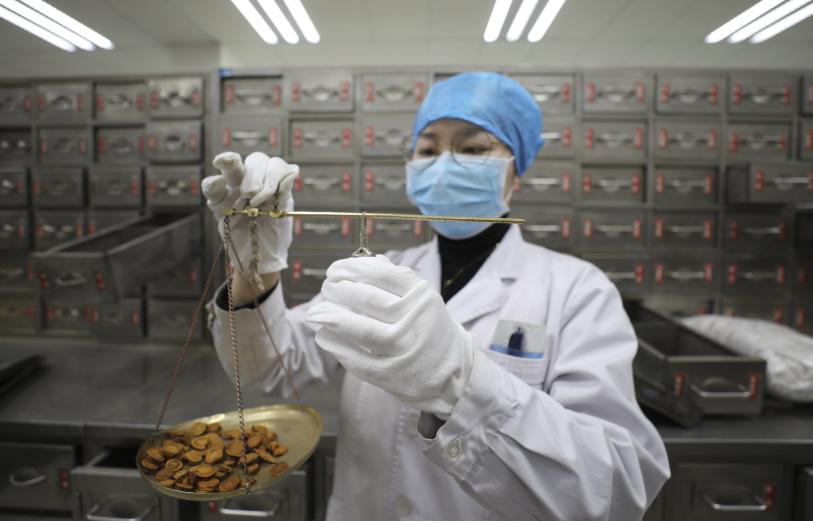
The Jinhua Qinggan Granule was developed during the 2009 H1N1 influenza pandemic. It consists of 12 herbal components including honeysuckle, mint and licorice and can clear heat and detoxify lungs.
It has a curative effect in treating mild and moderate patients and can also improve the recovery rate of lymphocytes and white blood cells, as well as reduce the rate of patients turning more severe.
In early February, 102 mild patients in Wuhan took Jinhua Qinggan Granule in their treatment. Only 11.8 percent worsened, and it took only one and a half days for patients to reduce fever.
A comparative experiment showed patients who took Jinhua Qinggan Granule tested negative for coronavirus two and a half days earlier than a group that did not take the granule. The group treated with the granule also took eight days to show improvement, while the other group took 10.3 days.
Ingredients: jinyinhua (金银花,or honeysuckle), zhebeimu (浙贝母, or fritillari), huangqin (黄芩, or baical skullcap root), niubangzi (牛蒡子, arctium lappa), qinghao (青蒿, or sweet wormwood herb ), and so on.
2. Lianhua Qingwen Capsule/Granule (连花清瘟胶囊/颗粒)
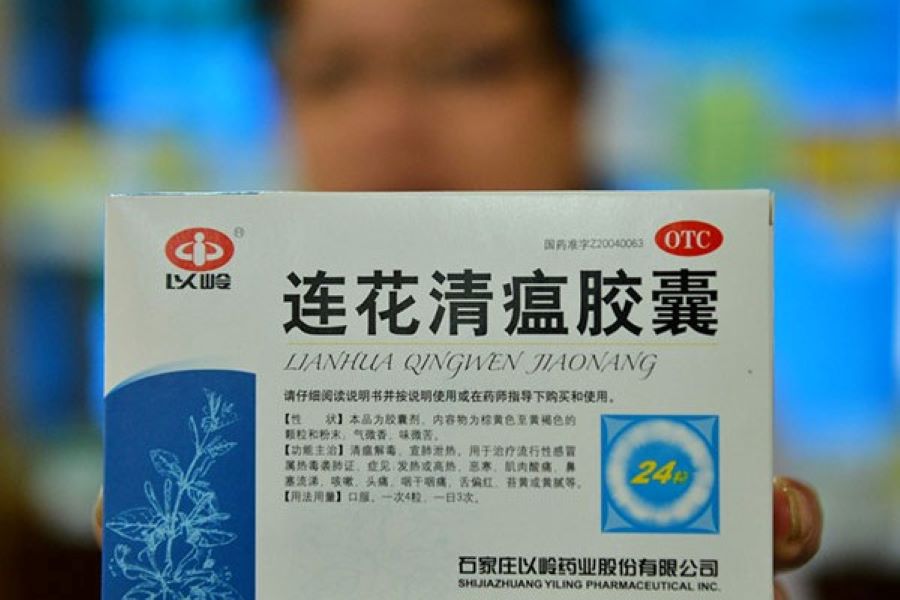
Lianhua Qingwen medicine is a very common traditional Chinese medicine used for the treatment of cold and flu. Composed of 13 herbal components, it has shown curative effects on mild and common patients, especially in relieving fever, cough and fatigue. It can reduce the occurrence of deterioration and help patients test negative.
Ingredients: lianqiao (连翘, or forsythia fruit), jinyinhua (金银花, or honeysuckle), zhimahuang (炙麻黄, or honey-fried herba ephedrae), yuxingcao (鱼腥草, or herba houttuyniae), dahuang (大黄, or rhubarb root and rhizome), hongjingtian (红景天, or rhodiola root), banlangen (板蓝根, or radix isatidis), and so on.
3. Xuebijing Injection (血必净注射液)
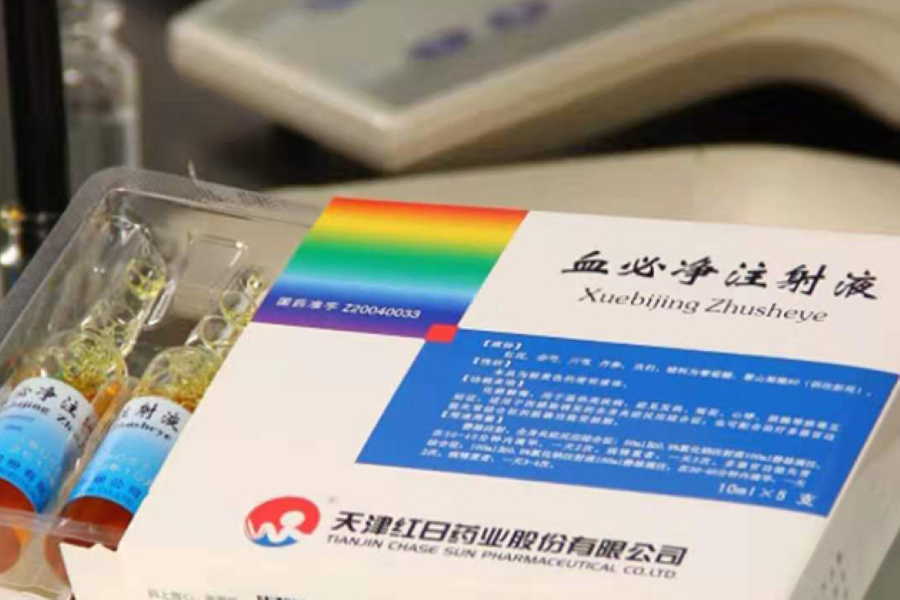
This injection was developed and marketed during the severe acute respiratory syndrome (SARS) epidemic in 2003. It consists of five herbal extracts, and its main function is to detoxify and remove blood stasis. It is typically used to treat sepsis.
It is effective in suppressing systemic inflammatory response syndrome induced by infection in the treatment of severe and critically ill patients, as well as repairing impaired organ function.
Initial clinical studies have shown the injection, combined with Western medicine, can increase the rate of hospital discharge and reduce the rate of deterioration. Basic research has also found it has a certain antiviral effect in vitro that can significantly inhibit inflammatory factors induced by novel coronavirus.
The novel coronavirus also tends to cause excessive clotting in the body that leads to organ embolism and damages tissues, and Xuebijing can help prevent excessive coagulation and the formation of thrombus.
A comparative experiment of 710 cases jointly conducted by over 30 hospitals showed the injection, combined with regular treatment, can reduce the mortality rate of severe patients by 8.8 percent and shorten intensive care unit hospitalization by 4 days.
Another project saw Xuebijing Injection applied clinically to severe and critical patients from the end of January, with 156 patients in 32 hospitals treated. They all saw improvement.
Research on the clinical safety of Xuebijing also showed the adverse reaction rate was about 0.3 percent, a very safe figure, and will not react adversely with other antibiotics or treatment.
Ingredients: honghua (红花, or safflower), danggui (当归, or Chinese angelica root), chishao (赤芍, or red peony root), chuangxiong (川芎, or ligusticum wallichii), danshen (丹参, or miltiorrhiza) and danggui (当归, or angelica sinensis) and other Chinese herbal extracts, and one of its main components is safflor yellow (A).
4. Lung Cleansing and Detoxifying Decoction (清肺排毒汤)
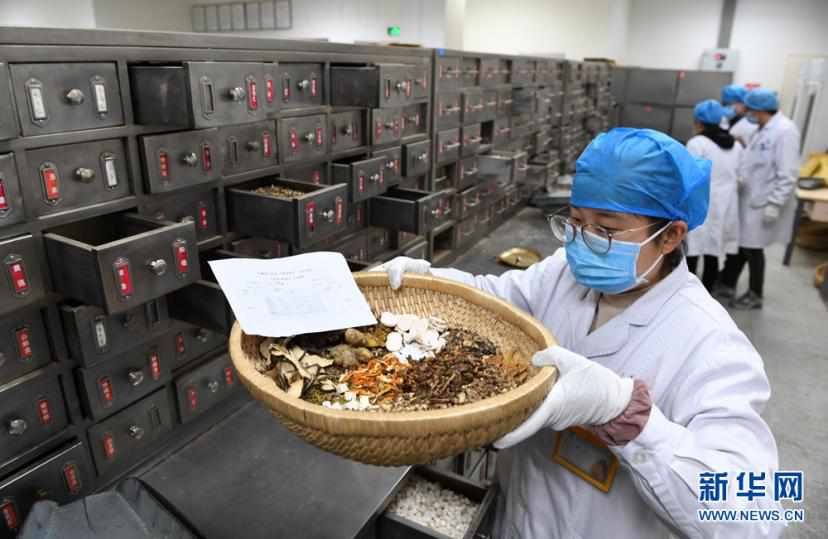
The Lung Cleansing and Detoxifying Decoction is derived from several classic recipes in a traditional Chinese medicine work known in English as Treatise on Cold Damage Diseases (Shang Han Za Bing Lun), which was written by Zhang Zhongjing sometime before 220 AD. It has 21 herbal components and is mainly effective in improving symptoms of fever, cough and fatigue as well as lung condition, as shown by CT scans, in severe patients.
Studies have proved the decoction can regulate multiple cell signaling pathways –as cells communicate with each other by receiving and processing chemical signals in response to environmental changes - to inhibit virus replication and avoid or mitigate cytokine storms, which are an overreaction of cells that damage the immune system.
The decoction targets lungs and can also protect other organs. It can be used as a general recipe for treating mild, moderate, severe and critical patients.
Tong Xiaolin, chief researcher of the Chinese Academy of Chinese Medical Sciences, said 1,261 novel coronavirus patients in 10 provinces took the decoction, with 1,102 recovering and symptoms no longer appearing in 29, a further 71 showing improvement and no cases deteriorating.
There were also 40 severe patients who used the decoction. After taking the medicine, 28 were discharged from hospital and the condition of 10 improved, with their symptoms changing from severe to mild.
Recommended prescription: 9g mahuang (麻黄, or ephedra herb), 6g zhigancao (炙甘草, or radix glycyrrhizaepreparata), 9g xingren (杏仁, or almond), 15-30g shengshigao (生石膏, or gypsum (fried first)),9g guizhi (桂枝, or cassia twig), 9g zexie (泽泻, or Alisma Orientale), 9g zhuling (猪苓, or polyporusumbrellatus), 9g baishu (白术, or largehead atractylodes rhizome), 15g fuling (茯苓, or poria), 16g chaihu (柴胡, or bupleurum chinense), 6g huangqin (黄芩, or baical skullcap root), 9g jiangbanxia (姜半夏, or pinelliaternata processed with ginger), 9g shengjiang (生姜, or green rhizomes), 9g ziwan (紫菀, or aster), 9g donghua (冬花, or flosfarfarae), 9g shegan (射干, or rhizomabelamcanda), 6g xixin (细辛, or manchurian wild ginger), 12g shanyao (山药, or rhizome dioscoreae), 6g zhishi (枳实, or fructus aurantiiimmaturus), 6g chenpi (陈皮, or dried tangerine or orange peel), 9g huoxiang (藿香, or ageratum)
Suggested use: 1 dose per day, boiled with water, twice a day at morning and evening (40 minutes after lunch and meal). Three doses are a course of treatment.
5. HuaShiBaiDu Formula (化湿败毒方)
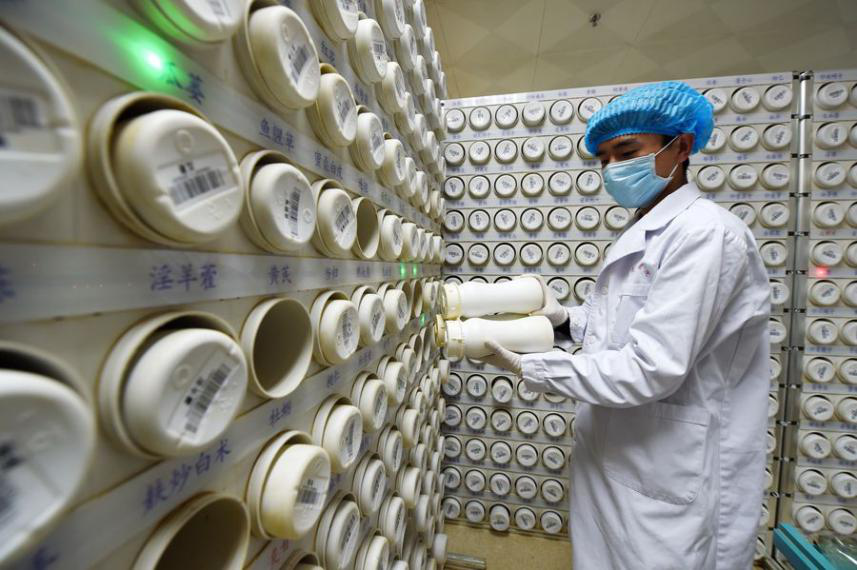
HuaShiBaiDu Formula is a core recipe developed by the national traditional Chinese medicine team from the China Academy of Chinese Medical Sciences. Made up of 14 herbal components, the formula is based on the recommendations of the early national diagnosis and treatment plan as well as the experiences from clinical practice at Wuhan Jinyintan Hospital.
Its main use is to detoxify, remove dampness and heat from the body and relieve cough to achieve an inner body balance. It can be used to treat light, moderate and severe patients.
This prescription has a comprehensive treatment effect in different stages of novel coronavirus pneumonia and can significantly shorten the length of hospital stays and improve clinical symptoms and lung conditions, as shown by CT scans and other examinations. Studies on guinea pigs found the formula can reduce lung viral load by 30 percent.
Recommended prescription: 6g shengmahuang (生麻黄, or raw ephedra), 9g xingren (杏仁, or almond), 15g shengshigao (生石膏, or gypsum), 3g gancao (甘草, or licorice), 10g huoxiang (藿香, or ageratum) (adding later), 10g houpo (厚朴, or officinal magnolia bark), 15g cangshu (仓术, or rhizoma atractylodis), 10g caoguo (草果, or fructus tsaoko), 9g fabanxia (法半夏, or rhizoma pinellinae praeparata), 15g fuling (茯苓, or poria), 5g shengdahuang (生大黄, or raw rhubarb) (adding later), 10g shenghuangqi (生黄芪, or membranous milkvetch root), 10g tinglizi (葶苈子, or lepidium seed), 10g chishao (赤芍, or red peony root).
Suggested use: 1-2 doses per day, boiled with 100 ml to 200 ml water, two or four times per day, oral or nasal feeding.
6. XuanFeiBaiDu Granule (宣肺败毒颗粒)
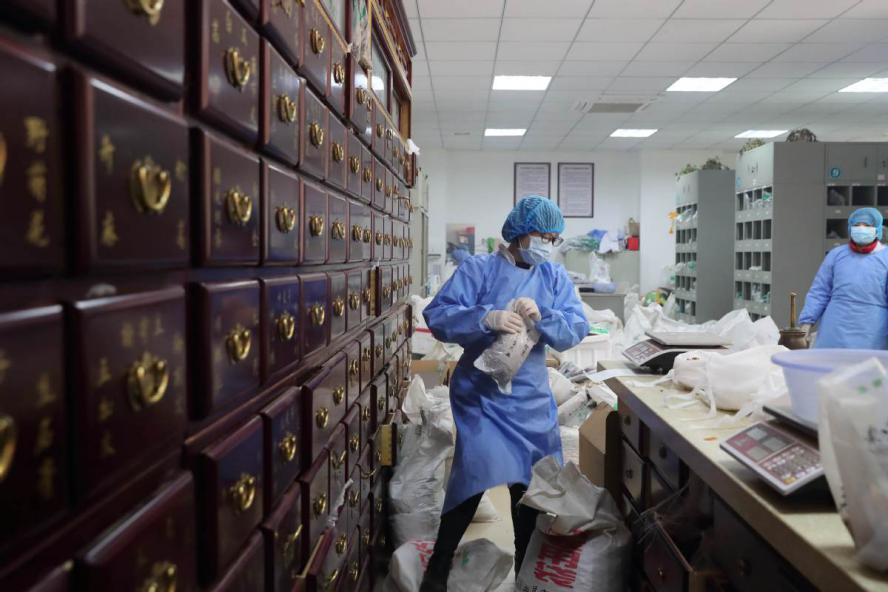
Xuanfeibaidu Granule, with 13 herbal components, originates from several classic traditional recipes.
It can detoxify the lungs and clear dampness and heat, and is used for treating light and moderate patients. Research has shown the prescription can shorten the time it takes for clinical symptoms to vanish and temperature to return to normal, and can effectively prevent light and moderate patients from deteriorating.
Recommended prescription: 6g shengmahuang (生麻黄, or raw ephedra), 15g kuxingren (苦杏仁, or bitter apricot kernel), 30g shengshigao (生石膏, or gypsum), 30g shengyiyiren (生薏苡仁, or raw coix seed), 10g maocangzhu (茅苍术, or lance atractylodes rhizome), 15g guanghuoxiang (广藿香, or patchouli), 12g qinghaocao (青蒿草, or southernwood), 20g huzhang (虎杖, or polygonum cospidatum), 30g mabiancao (马鞭草, oreuropean verbena), 30g ganlugen (干芦根, or dried phragmites communis), 15g tinglizi (葶苈子, or lepidium seed), 15g huajvhong (化橘红, or pummelo peel), 10g shenggancao (生甘草, or raw licorice)
Suggested use: 1 dose per day, boiled with 400 ml water, twice a day at morning and evening.
Source: National Administration of Traditional Chinese Medicine
Cao Zinan and Zhao Shiyue contributed to the story.
https://covid-19.chinadaily.com.cn/a/202003/17/WS5e702f52a31012821727fa19_1.html
ALSO:



